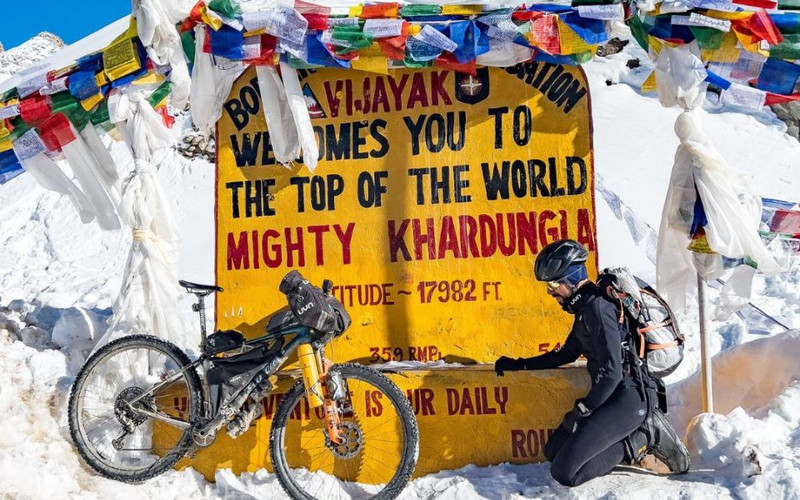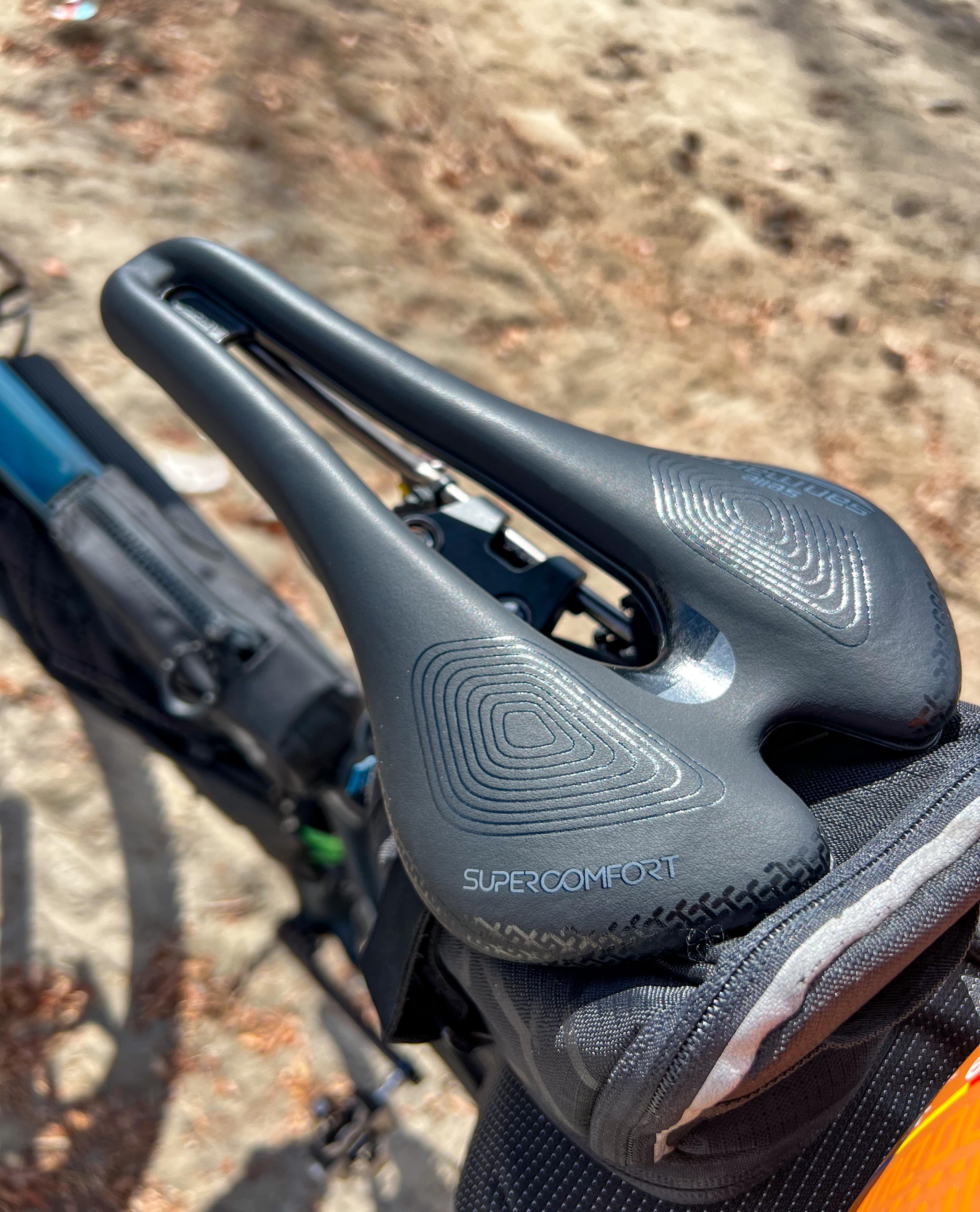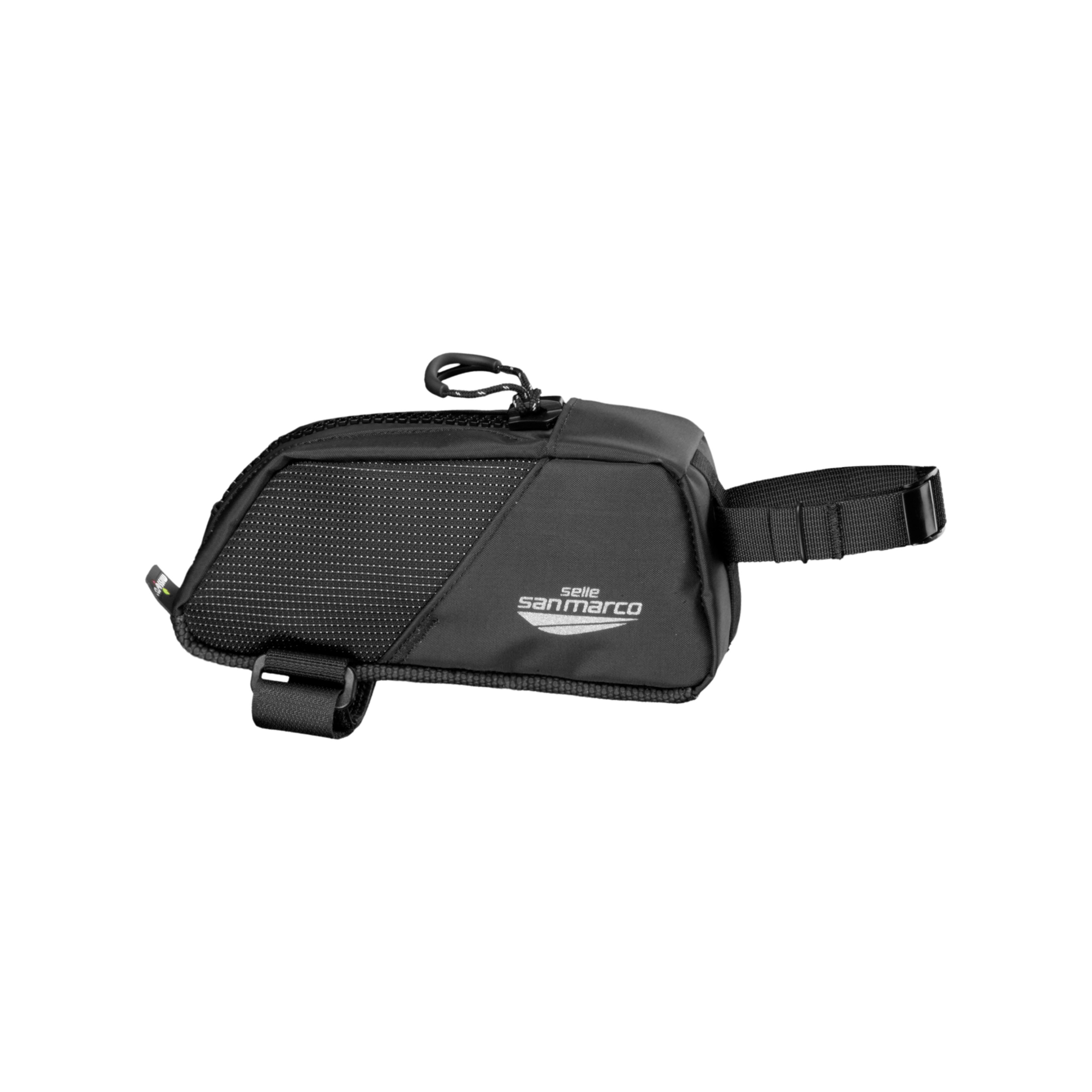At the start of 2023, ultra-cyclist and Selle San Marco ambassador, Omar Di Felice cycled by himself across the entire Ladakh Himalayan region of India in a project he calls Alone in Ladakh. It took him 11 days to ride the 1,100km route and climb almost 20,000m on some of the highest roads in the world, including an ascent to the Khardung La Pass, 5,359m above sea level.
We sat down for a chat with Omar to hear all about his trip, his inspiration, and his equipment.
Hey Omar. Why did you decide to ride Alone in Ladakh?
Unfortunately, I had to abandon my cycle across Antarctica due to personal reasons, so I was looking for a bike trip that would keep me fit, but more importantly, would help me on a personal and emotional level as well.
Ladakh had been on my radar for a long time. It’s got the mighty Himalayan peaks to challenge me on the bike mixed with remote villages and small communities for that human connection. But I never thought I’d find myself planning an adventure in such a fascinating and extreme region, especially in winter. The trip was also planned at the last minute, which isn’t how I usually do things.
The unexpected is something we always try to plan for on adventures like these. How did it feel to change your plans at the last minute?
We're always very attached to the idea of nature being dominated by man. We live in such man-made environments that we’ve developed the belief that we can control every variable. In reality, when you find yourself in such close contact with nature, you soon learn that it’s the rhythm of nature that dictates everything.
I’ve known for years that the routes I plan in some of the most remote areas of the planet are just an initial outline. So are the times, itineraries, and anything else that I try to put down on paper. Those plans represent a rough idea, but you need to be good at adapting quickly to weather conditions, the unexpected, and the signs from nature that remind us how small we are.
For ultra-trips like this, how do you prepare your equipment?
The testing and development phase of my setup runs for the whole season. I’m a technology enthusiast when it comes to cycling, I love to try out all the new components and innovations to see if they can make me more comfortable and improve my performance. But as well as this, I’m also a bit of a traditionalist. If I find the right component, especially in important areas like the saddle and contact points, I hardly ever change it.
How important is it to find the right saddle?
I spent my entire road cycling career on the legendary Concor Light and since becoming an ultra-cyclist, I needed something to match that level of comfort, but over a very long period of time. The Aspide Supercomfort has been my saddle of choice since I started this new discipline of cycling, both in races and during solo adventures. It helped me achieve some great goals over the last five or six years.
But with all the new information coming out about shorter saddles, I was interested in evolving my setup again. So, I switched to the Aspide Short Supercomfort, and while you mightn't see a noticeable change in my riding style, it has fundamentally changed how I ride bikes.
I rode the Aspide Short Supercomfort in Antarctica, then I brought it to Ladakh, where it performed brilliantly on the mountain bike that I used for the high Himalayan passes, dirt roads, and rocky trails. This gave me a chance to fully test it ahead of the ultra-cycling season where I’ll ride it in the long, non-stop races.
Know that we know you had a great setup for your ride, can you tell us more about the Himalayas?
The scenery of the Himalayas, the grandeur of the Alpine valleys, and the sounds of nature transported me into a parallel universe. I felt like the natural relationship between man and nature was restored. The colour of the sky is something that always amazes me; despite so many adventures and experiencing all sorts of landscapes, seeing the colour of the sky without pollution is always striking.
It’s such a remote part of the world. Did you get a chance to meet any people along the way?
Bike trips like this allow us to reconnect with nature but also to reconnect with the best part of being human. The people living in the Ladakh region of the Himalayas live in conditions that are completely different to what I have back home. Despite the modest conditions, where people might perceive that they have ‘less’, I experienced incredible generosity and true hospitality.
How has completing Alone in Ladakh affected you?
Alone in Ladakh helped me to reconnect. I reconnected with myself and my desire to explore the beautiful world by bike. Cycling is a simple motion, but it’s also such a powerful mode of transport that we’ve all been able to do since we were kids.




















